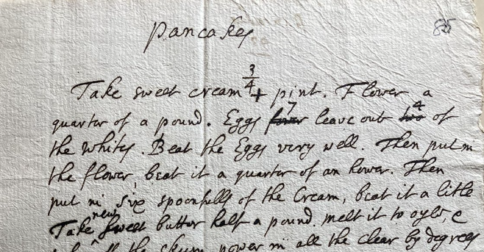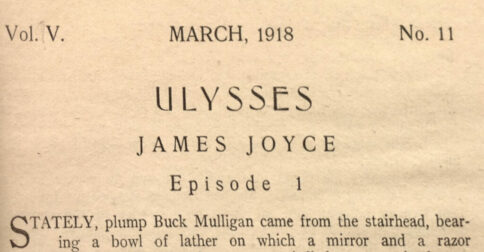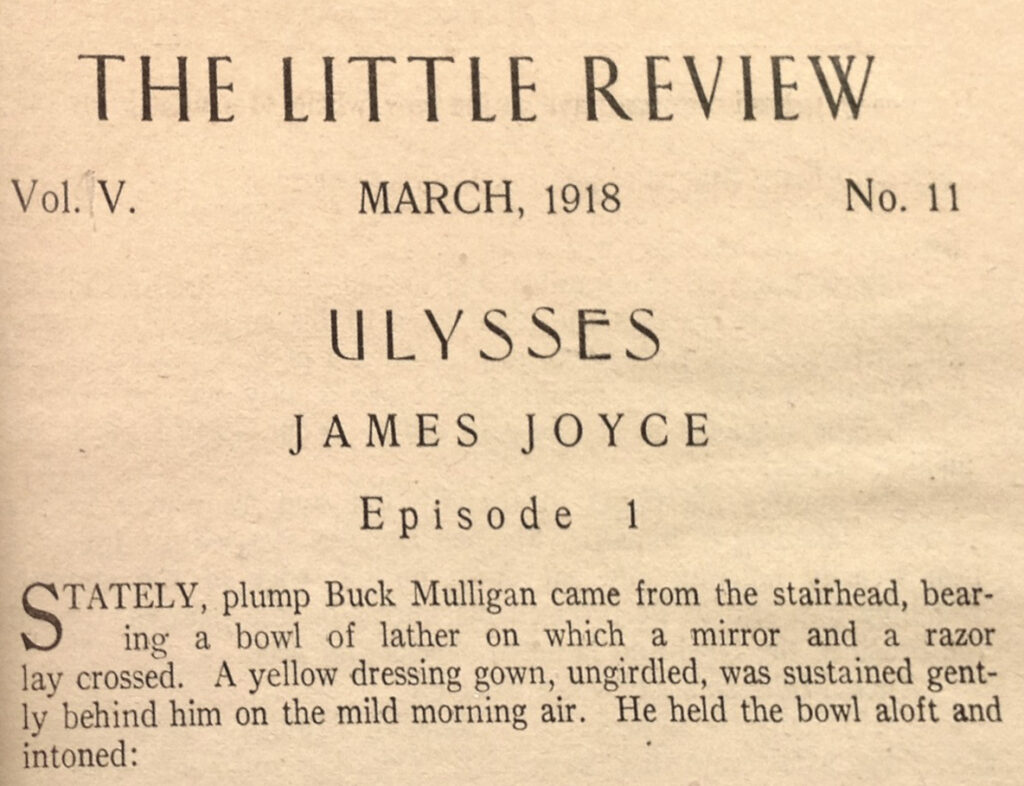[Most Recent Entries] [Calendar View]
Friday, February 4th, 2022
| Time | Event |
| 9:00a | John Locke’s Personal Pancake Recipe: “This Is the Right Way” to Make the Classic Breakfast Treat 
No student of Western political philosophy can ignore John Locke, whose work defined the concepts of governance we now know as liberalism. By the same token, no student of Western cuisine can ignore pancakes, a canonical element of what we now know as breakfast. The oldest pancake recipe we’ve featured here on Open Culture dates to 1585. Ernest Hemingway had his own preferred pancake-making method; so do Simon and Garfunkel, though theirs are of the potato variety. Locke, as you might imagine, opted for a more traditionally English recipe. Three centuries on, how well his vision of liberalism has held up remains a matter of active debate. As for his pancakes, Marissa Nicosia at Cooking in the Archives put them to the test just last year. “When David Armitage posted this recipe for pancakes in the Bodleian collection on Twitter, I knew that I wanted to try it,” Nicosia writes. Her transcription is as follows:
“From the start, I was intrigued by the cross-outs and other notes in the recipe. It appears that it was first drafted (or prepared) using significantly fewer eggs.” As meticulous in his cooking as in his philosophy, Locke clearly paid close attention to “the details of separating and whisking eggs as well as adding just the right amount of orange blossom water (‘litle’) and nutmeg (‘Half a grated nutmeg’) — an exceptional, expensive amount.” Drawing on her significant experience with early modern pancakes, Nicosia describes Locke’s version as “a bit fluffier and fattier than a classic French crêpe,” though with “far less rise than my favorite American breakfast version”; her husband places them “somewhere between a classic English pancake and a Scotch pancake.” Perhaps that somewhat northerly taste and texture stands to reason, in light of the considerable influence Locke’s non-pancake-related work would later have on the Scottish Enlightenment. The final line of Locke’s recipe, “This is the right way,” may sound a bit stern in context today. But whether you work straight from his original or from the updated version Nicosia provides in her post, you should end up with “pancakes made for a decadent breakfast.” Locke’s inclusion of an extravagant amount of nutmeg and splash of orange-blossom water “elevates this specific pancake recipe to a special treat.” Nicosia includes a picture of her own honey-drizzled Lockean breakfast with the a copy of Two Treatises of Government and a cup of coffee — the latter being an especially ideal accompaniment to pancakes, and one that also comes thoroughly philosopher-endorsed. Related content: Introduction to Political Philosophy: A Free Online Course from Yale University Hobbes, Locke & Rousseau: An Animated Introduction to Their Political Theories What Makes Us Human?: Chomsky, Locke & Marx Introduced by New Animated Videos from the BBC A 1585 Recipe for Making Pancakes: Make It Your Saturday Morning Breakfast Based in Seoul, Colin Marshall writes and broadcasts on cities and culture. His projects include the book The Stateless City: a Walk through 21st-Century Los Angeles and the video series The City in Cinema. Follow him on Twitter at @colinmarshall or on Facebook. |
| 12:00p | Read the Original Serialized Edition of James Joyce’s Ulysses (1918) 
In the second decade of the 20th century, American editor Margaret C. Anderson published The Little Review, a monthly literary journal of modernist and experimental prose, poetry, and art. Four years into its existence, at the beginning of 1918, Anderson announced to her readers this:
February 2, 2022 marked the 100th anniversary of Ulysses, the day on which the full novel, first serialized in The Little Review, was published. Joyce, like many of The Little Review’s British and European writers, came to Anderson through her fellow editor Ezra Pound. Anderson might have sensed the greatness that was to come and she knew the danger in that greatness. In the end, publishing Ulysses would make her an enemy of the state. Over at the Modernist Journals Project, you can read every single issue of The Little Review (and other such magazines) to place this revolutionary novel in context. The March 1918 issue which begins the journey of Dedalus and Leopold Bloom also features works by Wyndham Lewis and Ezra Pound, Ford Madox Ford, Jessica Dismorr, and Arthur Symons; letters (and some hate mail) from readers; advertisements for other literary magazines like The Quill, The Pagan, and The Egoist; ads for restaurants in Greenwich Village, and one for the Berlitz School of Languages; and a final appeal for more readers. The most interesting of these sections is Pound’s screed against American obscenity laws. The Little Review had already had an issue confiscated by the US Post Office. In 1917, a Wyndham Lewis story about a soldier who gets a girl pregnant and abandons her was declared obscene, both for “lewdness” and its anti-war stance. Pound suspected the government was targeting Anderson and her co-editor (and lover) Jane Heap for their support of anarchists Emma Goldman and Alexander Berkman, along with their anti-war stances. The Wyndham Lewis incident had made it difficult for Anderson and Heap to find a publisher, so they knew some of the risks in beginning the serial. Soon enough they ran into trouble. Ulysses consists of 18 chapters or “Episodes”. The US government seized the issues featuring Episode 8 (“Lestrygonians”), Episode 9 (“Scylla and Charybdis”), and Episode 12 (“Cyclops”) and burned them. But it was Episode 13, “Nausicaa,” that led to charges being filed against the publishers. The chapter, which features a girl exposing herself and Leopold Bloom masturbating to orgasm (but written in such a, well, Joycean way that most would just miss it), was too much for some.
The trial that followed was a travesty, including a judge ruling that the offensive sections of “Nausicaa” not be read out loud because a woman was present. When it was pointed out that the woman was the publisher Anderson herself, he declared “she didn’t know the significance of what she was publishing”. Anderson and Heap were found guilty, forced to discontinue publishing “Ulysses” and fined one hundred dollars. The Little Review printed a section of Episode 14 (“Oxen of the Sun”) and then stopped. Anderson thought of giving up the magazine, but turned over control to Heap. The magazine continued publishing until 1929, but removed their motto: “Making No Compromise with the Public Taste.” James Joyce did not stop, however, and Sylvia Beach—an ex-pat living in Paris and running the bookstore Shakespeare and Co.—published the full novel in 1922. Americans would have to wait one more year, 1923, to read this “obscene” novel. Anderson was correct however—-she had a major role in promoting this “prose masterpiece.” And one hundred years later, Puritanical Americans are still banning and burning books, which is only resulting, like it did for Joyce’s novel, in sending the works into the Best Seller lists. Related content: James Joyce’s Ulysses: Download as a Free Audio Book & Free eBook Virginia Woolf on James Joyce’s Ulysses, “Never Did Any Book So Bore Me.” Shen Then Quit at Page 200 James Joyce’s Crayon Covered Manuscript Pages for Ulysses and Finnegans Wake Ted Mills is a freelance writer on the arts who currently hosts the Notes from the Shed podcast and is the producer of KCRW’s Curious Coast. You can also follow him on Twitter at @tedmills, and/or watch his films here. |
| << Previous Day |
2022/02/04 [Calendar] |
Next Day >> |

